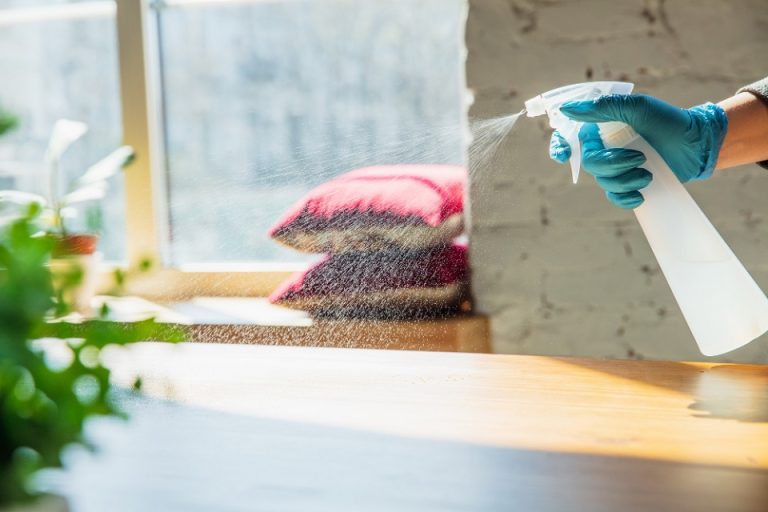Dealing with pests in your home is never pleasant. Whether it’s ants marching across the kitchen counter or mice rustling in the attic, most homeowners want to get the problem under control fast. With countless DIY pest control products available at hardware stores and online, it’s tempting to take matters into your own hands.
But not all DIY solutions are effective—and in some cases, they can even make the problem worse. So, how do you know when a do-it-yourself fix is enough, and when it’s time to bring in professional help?
In this post, we’ll break down common DIY pest control methods, where they work, where they fall short, and when to stop experimenting and call in the experts.
What DIY Pest Control Methods Can Work
There are some situations where DIY pest control is perfectly safe and effective—especially for minor or isolated issues. Here are a few methods that can deliver results when used properly:
1. Store-Bought Traps and Baits
- Effective for: Small ant problems, flies, occasional mice
- How it works: Traps and bait stations attract pests with food or pheromones, then kill them or trap them for disposal.
- Tips: Place baits near high-activity areas, but away from children and pets. Read and follow all instructions carefully.
2. Natural Remedies
- Effective for: Mild infestations of ants, fruit flies, or gnats
- Examples: Vinegar traps, diatomaceous earth, citrus peels, essential oil sprays
- Tips: These methods are safer for pets and children, but they often need repeated application and are best for prevention or small issues—not full-blown infestations.
3. Sealing Entry Points
- Effective for: Preventing pests like rodents, cockroaches, and spiders
- How it works: Identifying and sealing cracks, holes, or gaps in your home’s foundation, windows, or doors prevents pests from getting inside.
- Tips: Use caulk, steel wool, or weather stripping to block access points. This should be part of any pest control strategy—DIY or professional.
4. Cleaning and Sanitation
- Effective for: Preventing and minimizing all types of pests
- How it works: Pests are drawn to food, moisture, and clutter. Keeping your home clean makes it less attractive to them.
- Tips: Wipe counters, seal food, take out the trash, fix leaks, and eliminate standing water.
Where DIY Pest Control Falls Short
While DIY methods can be helpful for small problems, they often don’t get to the root of the issue. Here are some scenarios where DIY just doesn’t cut it:
1. Recurring or Widespread Infestations
If you’re setting traps or spraying every week but still seeing bugs or rodents, the infestation is likely larger or more deeply rooted than you can handle on your own.
2. Hard-to-Reach Areas
Pests love to hide in walls, attics, basements, and crawl spaces. DIY methods rarely reach these areas effectively, allowing colonies to grow undisturbed.
3. Misidentifying the Pest
You can’t treat what you don’t correctly identify. Many DIY treatments target one type of pest, but won’t work on others. Treating carpenter ants the same way you’d treat termites, for example, is a costly mistake.
4. Health and Safety Risks
Some over-the-counter pesticides are toxic or can be harmful if misused. Without proper training or safety gear, DIY pest control can put your family, pets, or the environment at risk.
When to Call the Pros
Sometimes, the smartest and safest option is to call a licensed pest control professional. Here’s when it’s worth picking up the phone:
- You’ve tried DIY methods and the problem keeps coming back.
- You see pests during the day (especially cockroaches or rodents), which often means a large infestation.
- You find evidence of structural damage (chewed wires, hollow wood, droppings in insulation).
- You’re dealing with stinging insects, such as wasps or hornets, in or near your home.
- You have small children, pets, or health conditions that make exposure to chemicals more dangerous.
Professional pest control companies use integrated pest management (IPM) techniques, which go beyond spraying chemicals. They inspect, identify, and treat the problem at its source, with long-term prevention in mind.
Final Thoughts
DIY pest control can be a helpful first line of defense for minor problems, but it’s not always the best solution. Understanding the limits of what you can handle yourself—and knowing when to call in the experts—can save you time, money, and stress.
If you’re seeing signs of pests that just won’t go away, or you’re not sure how serious the problem is, don’t wait until it gets worse. A professional inspection is usually free or low-cost and can provide peace of mind.
When in doubt, trust the pros to protect your home—and your health—from unwanted guests. We recommend pest control in new york.


Comments are closed.